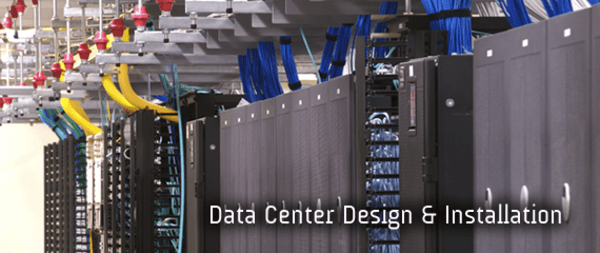
5 Best Practices in Data Center Design
May 21, 2019
How AI Is Being Used in Healthcare
May 22, 2019Once you’ve decided on the right colocation provider for your business, you need to plan and execute a data center migration that will enable you to put that choice to good use.
In part one of this series on maximizing your return on investment in server colocation, I evaluated the criteria businesses should keep in mind as they decide on the ideal colocation provider for their needs. From wide-ranging managed services and around-the-clock IT support to power density and facility location, stakeholders have a lot to think about when it comes to investing in a colocation partnership.
To help you steer clear of such self-sabotage, I’ve drawn up this guide for ensuring your migration goes as smoothly as possible. Ultimately, whether you’re an established operation getting ready to expand to new markets or a startup looking to leverage cutting-edge IT tools to galvanize your brand, investing in server colocation is an exciting step for your business. In the final analysis, maximizing your return on investment in server colocation is a critical chance to demonstrate that you’re ready to take your business to the next level.
Establish a Clear Chain of Command
While the action items that follow are all mission-critical, establishing a clear chain of command is an essential preliminary step in carrying out each of them successfully. By empowering key players on each team, streamlining approval processes, and vesting a single stakeholder with ultimate decision-making authority, you’ll have an easier time making sure everyone remains on the same page throughout the migration process.
This isn’t just helpful for your internal operations, however. It will also help you communicate more effectively with your colocation provider both during and after your data center migration. Providing your partner with a clear point of contact can help them resolve issues quickly on their end and quell confusion among your own team members who might be reticent to make decisions they’re not sure they’re properly equipped—or entitled—to make.
Inventory Digital Assets
As your data center migration plans gain momentum, you’ll need to be sure that you have a clear understanding of everything that will need to be moved. While your colocation provider will likely furnish the physical hardware necessary for the server, networking, and computing services you’ve mapped out, you still need to conduct an internal audit of your current digital environment in order to be certain of what needs to be attended to during the move.
For example, you should audit live workloads, scheduled backups, and planned updates and patches that may conflict with your migration. If you don’t, you run the risk of data loss, longer-than-expected downtime, or even cybersecurity breaches. Being sure that you’ve taken appropriate precautions with digital assets can help protect business continuity and ward off any bad actors who might try to leverage mid-migration missteps.
Prepare Your Data for a Colocation Environment
This step might seem obvious, but it’s important to make sure that you’re ready for the specific configuration of your chosen colocation environment. Every provider will have their own set of specifications and their own protocols for migrating information from customers’ facilities to their own. To do this effectively, you’ll need to foster coordination between your provider and your IT team to ensure that the latter understands the tech specifications they’ll be dealing with at the former’s facilities.
This preparation should include extracting data from its current location, reformatting it as needed, and working to preserve related metadata during the migration process. Because data loss, data duplication, and data corruption are very real possibilities during haphazard data center migrations, it’s critical that you understand what you need to do to protect the integrity of your data during a move.
Run Plenty of Tests
Make sure you’re running regular tests to guarantee that digital processes are functioning as expected before, during, and after your initial data migration. Prior to your migration, this will help you sort out issues before they occur and flag potential problems that would be relevant to the preparatory work outlined above.

During and after your data migration, running tests can help your team and your colocation provider identify problems that may have arisen during the initial data transfer but flown under both parties’ radars. Among other things, these tests should include high-availability portions and failover, which will help you understand whether you’re hitting the performance benchmarks you set prior to your migration.
Monitor Ongoing Operations
Once you’ve completed your migration, you’ll need to enact runbooks to get your collocated data center up and running per your service agreement. This will involve assessing performance to make sure you’re hitting the efficiency and dependability benchmarks that made colocation attractive in the first place.
If anything needs attention, you can liaise with your colocation provider to deploy a fix as quickly as possible. And, if necessary, you can engage your colocation provider’s roster of managed services to alleviate excessive burdens on your internal teams.
Ready to Start Reaping the Rewards of Server Colocation
With part two of this series wrapped up, you should have a firm handle on the basics of selecting a reliable colocation provider and carrying out an effective data center migration. Of course, the specifics of each step will vary from one team to another, but the throughline in all of this is that doing your due diligence to find a partner that’s as invested in your business’ success as you are is always a wise choice.
If you’re in the market for that kind of colocation provider, consider reaching out to Colocation America. Our state-of-the-art facilities and experienced professional staff can help you maximize your returns on server colocation, regardless of the scope of your business or the size of your budget.

